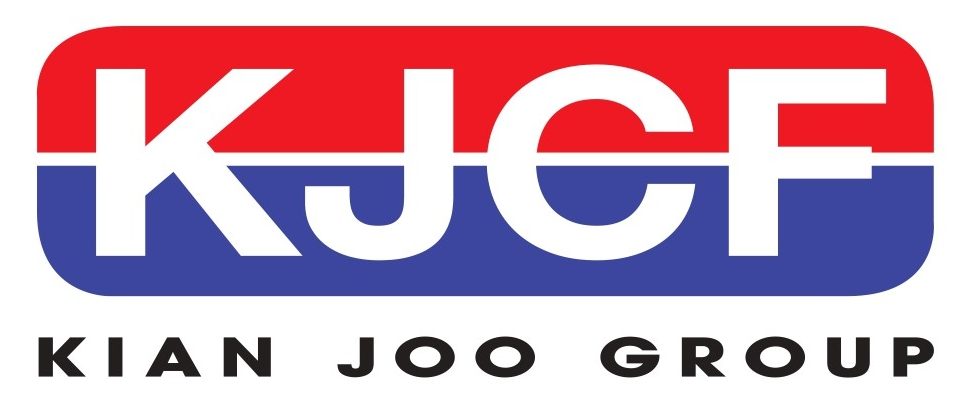

It is the policy of the Company to promote a safe and healthy working environment that fosters mutual respect where individual employees irrespective of status or position are treated with dignity and free from sexual harassment.
Employees are strictly prohibited from engaging in any form of harassment, humiliation and intimidation of sexual nature.
6.1 Definition of Sexual Harassment
For the purpose of this code, sexual harassment is defined as:
- That might, on reasonable grounds, be perceived by the recipient as placing a condition of a sexual nature on his employment.
- That might, on reasonable grounds, be perceived by the receipt as an offense or humiliation, or a threat to his wellbeing, but has no direct link to his employment.
6.1.1 Sexual harassment can occur between individuals of different sexes or of the same sex. Based on the above definition, sexual harassment may be divided into two categories, namely sexual coercion and sexual annoyance.
- Sexual coercion is sexual harassment that results in some direct consequence to the victim’s employment. An example of coercive sexual harassment of this kind is where a superior, who has power over salary and promotion, attempts to coerce a subordinate to grant sexual favours. If the subordinate accedes to the superior’s sexual solicitation, job benefits will follow. Conversely, if the subordinate refuses, job benefits are denied.
- Sexual annoyance, the second type of sexual harassment is sexually-related conduct that is offensive, hostile or intimidating to the recipient, but nonetheless has no direct link to any job benefit. However, the annoying conduct creates a bothersome working environment which the recipient has to tolerate in order to continue working. Sexual harassment by an employee against a co-employee falls into this category. Similarly, harassment by a Company’s client against an employee falls into this category.
6.1.2 Sexual harassment in the workplace includes any employment-related sexual harassment occurring outside the workplace as a result of employment or employment-related responsibilities sexual harassment may take place include, but are not limited to the following:
- A. At work-related social functions;
- B. In the course of work assignment outside the workplace;
- C. At work-related conferences or training sessions;
- During work-related travel;
- Over the phone; and
- Through electronic media
6.1.3 It is essential to emphasize that sexual harassment refers to sexual conduct which is unwanted and unwelcome to the recipient. It is also a sexual conduct and which is imposed on unsolicited or unreciprocated by the recipient.
6.2 Forms of Sexual Harassment
Sexual harassment encompasses various conducts of a sexual nature which can manifest themselves in five possible forms, namely:
- Verbal harassment: e.g. offensive or suggestive remarks, comments, jokes, kidding, teasing, sounds, inquiries or discussions about sexual activities or other verbal abuse;
- Non-verbal / gestural harassment e.g. leering or ogling with suggestive overtones, licking lips, holding or eating food provocatively, hand signal or sign language denoting sexual activity, persistent flirting;
- Visual harassment e.g. showing pornographic materials, writing sexually suggestive letters or other written materials, sexual exposure;
- Psychological harassment e.g. repeated unwanted social invitations, proposals for dates or physical intimacy;
- Physical harassment e.g. inappropriate touching, patting, pinching, stroking, grabbing, hugging, kissing, fondling, brushing up against the body, or coerced sexual intercourse sexual assault.
6.3 Disciplinary Action
All employees including supervisors and managers will be subject to disciplinary action up to and including dismissal for engaging in sexual harassment. Employees who make false and malicious complaints of sexual harassment as opposed to complaints that are made in good faith will also be subject to disciplinary action.
An independent and thorough investigation in a manner that is as confidential as possible under the circumstances will be carried out on all complaints received alleging sexual harassment.
6.4 Complaints Procedure
Due to the sensitive and personal nature of sexual harassment complaints, employees who believe them to be aggrieved under this policy should, within seven (7) days from the date of the purported incident direct his / her grievance to the HRD.
It is necessary that such complaints be made direct to the HRD, so as to ensure maximum confidentiality and to minimize embarrassment to the complainant especially at the time of reporting and in the course of investigation into the complaint.
The complainant and alleged harasser will both be interviewed as will any individual who may be able to provide relevant information. An accurate record of the objectionable behaviour or misconduct is needed to resolve a formal complaint of sexual harassment. Verbal reports of sexual harassment must be reduced to writing by either the complainant or the individual who receive the complaints and must be signed by the complainant. Employees, who believe that they have been or are currently harassed, should maintain a record of the objectionable behaviour in order to substantiate their allegations. If the investigation reveals evidence to support the complaint of sexual harassment, a Domestic Inquiry will be conducted against the alleged harasser.
Regardless of the outcome of a sexual harassment complaint made in good faith, the employee lodging the complaint, as well as anyone providing information, will be protected from any form of retaliation by either co-workers or superiors. This includes demotion, unwanted transfer, denial of opportunities within the company, as well as harassment of the employee as a result of his/her having made a complaint or having provided evidence regarding the complaint.
It is the policy of the Company to promote a safe and healthy working environment that fosters mutual respect where individual employees irrespective of status or position are treated with dignity and free from sexual harassment.
Employees are strictly prohibited from engaging in any form of harassment, humiliation and intimidation of sexual nature.
6.1 Definition of Sexual Harassment
For the purpose of this code, sexual harassment is defined as:
- That might, on reasonable grounds, be perceived by the recipient as placing a condition of a sexual nature on his employment.
- That might, on reasonable grounds, be perceived by the receipt as an offense or humiliation, or a threat to his wellbeing, but has no direct link to his employment.
6.1.1 Sexual harassment can occur between individuals of different sexes or of the same sex. Based on the above definition, sexual harassment may be divided into two categories, namely sexual coercion and sexual annoyance.
- Sexual coercion is sexual harassment that results in some direct consequence to the victim’s employment. An example of coercive sexual harassment of this kind is where a superior, who has power over salary and promotion, attempts to coerce a subordinate to grant sexual favours. If the subordinate accedes to the superior’s sexual solicitation, job benefits will follow. Conversely, if the subordinate refuses, job benefits are denied.
- Sexual annoyance, the second type of sexual harassment is sexually-related conduct that is offensive, hostile or intimidating to the recipient, but nonetheless has no direct link to any job benefit. However, the annoying conduct creates a bothersome working environment which the recipient has to tolerate in order to continue working. Sexual harassment by an employee against a co-employee falls into this category. Similarly, harassment by a Company’s client against an employee falls into this category.
6.1.2 Sexual harassment in the workplace includes any employment-related sexual harassment occurring outside the workplace as a result of employment or employment-related responsibilities sexual harassment may take place include, but are not limited to the following:
- A. At work-related social functions;
- B. In the course of work assignment outside the workplace;
- C. At work-related conferences or training sessions;
- During work-related travel;
- Over the phone; and
- Through electronic media
6.1.3 It is essential to emphasize that sexual harassment refers to sexual conduct which is unwanted and unwelcome to the recipient. It is also a sexual conduct and which is imposed on unsolicited or unreciprocated by the recipient.
6.2 Forms of Sexual Harassment
Sexual harassment encompasses various conducts of a sexual nature which can manifest themselves in five possible forms, namely:
- Verbal harassment: e.g. offensive or suggestive remarks, comments, jokes, kidding, teasing, sounds, inquiries or discussions about sexual activities or other verbal abuse;
- Non-verbal / gestural harassment e.g. leering or ogling with suggestive overtones, licking lips, holding or eating food provocatively, hand signal or sign language denoting sexual activity, persistent flirting;
- Visual harassment e.g. showing pornographic materials, writing sexually suggestive letters or other written materials, sexual exposure;
- Psychological harassment e.g. repeated unwanted social invitations, proposals for dates or physical intimacy;
- Physical harassment e.g. inappropriate touching, patting, pinching, stroking, grabbing, hugging, kissing, fondling, brushing up against the body, or coerced sexual intercourse sexual assault.
6.3 Disciplinary Action
All employees including supervisors and managers will be subject to disciplinary action up to and including dismissal for engaging in sexual harassment. Employees who make false and malicious complaints of sexual harassment as opposed to complaints that are made in good faith will also be subject to disciplinary action.
An independent and thorough investigation in a manner that is as confidential as possible under the circumstances will be carried out on all complaints received alleging sexual harassment.
6.4 Complaints Procedure
Due to the sensitive and personal nature of sexual harassment complaints, employees who believe them to be aggrieved under this policy should, within seven (7) days from the date of the purported incident direct his / her grievance to the HRD.
It is necessary that such complaints be made direct to the HRD, so as to ensure maximum confidentiality and to minimize embarrassment to the complainant especially at the time of reporting and in the course of investigation into the complaint.
The complainant and alleged harasser will both be interviewed as will any individual who may be able to provide relevant information. An accurate record of the objectionable behaviour or misconduct is needed to resolve a formal complaint of sexual harassment. Verbal reports of sexual harassment must be reduced to writing by either the complainant or the individual who receive the complaints and must be signed by the complainant. Employees, who believe that they have been or are currently harassed, should maintain a record of the objectionable behaviour in order to substantiate their allegations. If the investigation reveals evidence to support the complaint of sexual harassment, a Domestic Inquiry will be conducted against the alleged harasser.
Regardless of the outcome of a sexual harassment complaint made in good faith, the employee lodging the complaint, as well as anyone providing information, will be protected from any form of retaliation by either co-workers or superiors. This includes demotion, unwanted transfer, denial of opportunities within the company, as well as harassment of the employee as a result of his/her having made a complaint or having provided evidence regarding the complaint.

